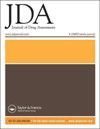Impact of multidisciplinary patient education sessions on expectations and understanding of new calcitonin gene-related peptide treatments
IF 2.4
引用次数: 0
Abstract
Abstract Background: The new calcitonin gene-related peptide (CGRP) medications offer an exciting alternative to daily preventative migraine treatments. Finding effective and efficient ways to educate patients can be challenging for providers and pharmacists alike given the treatments are subcutaneous injections with extended half-lives and data is limited on long-term efficacy and adverse effects. Aims: We aimed to develop and evaluate a patient-oriented, multidisciplinary presentation to inform patients about the new CGRP drug class to decrease provider and pharmacist education burden while increasing patient understanding. Methods: Three live, one-hour CGRP informational sessions were conducted jointly by a headache medicine neurologist and clinical pharmacist from the institution’s specialty pharmacy. Prior to medication initiation, patients were educated about CGRP pathophysiology, benefits, risks, injection technique, and logistics of cost and medication access. The third presentation was video recorded and transitioned to an online platform. Participants completed surveys before and after watching the in-person or online session. Patients had the ability to fill these self-injectable therapies at the institution’s specialty pharmacy, who assisted with benefits investigation and prior authorization. If within payor network, the patient was offered specialty pharmacy services. Results: A total of 84 patients participated in the session (41 in-person; 43 online). Patients had frequent headaches (mean = 18/month; SD = 9.2) with severe (MIDAS >21) headache-related disability (mean MIDAS score = 63.1). Participants reporting confidence in understanding CGRP significantly increased from 68% to 97% following the informational session (p < .001) for those completing both the pre- and post-survey question (n = 69). There was also a significant increase from 84% to 97% in participants reporting comfort with injection technique (p = .008, n = 70). For both measures, there was no statistically significant difference between the in-person and online sessions. Nearly all participants (97%) would recommend the session to family or friends with migraine. Conclusions: The multidisciplinary informational session was an effective and efficient method of educating patients about these new treatments while concurrently decreasing provider and pharmacist education burden. The online video was as effective as the in-person session in educating patients, but improved access and availability.多学科患者教育会议对新的降钙素基因相关肽治疗的期望和理解的影响
背景:新的降钙素基因相关肽(CGRP)药物为日常预防性偏头痛治疗提供了令人兴奋的替代方案。对于提供者和药剂师来说,寻找有效和高效的方法来教育患者可能具有挑战性,因为治疗方法是皮下注射,半衰期延长,而且长期疗效和不良反应的数据有限。目的:我们旨在开发和评估以患者为导向的多学科报告,告知患者新的CGRP药物类别,以减轻提供者和药剂师的教育负担,同时增加患者的理解。方法:由该机构专业药房的头痛医学神经科医师和临床药师联合进行3次1小时的实时CGRP信息交流会。在开始用药之前,患者被告知CGRP的病理生理、益处、风险、注射技术以及成本和药物获取的物流。第三次演示是视频录制,并转移到在线平台上。参与者在观看现场或在线课程之前和之后分别完成了调查。患者有能力在该机构的专业药房填写这些自我注射疗法,他们协助进行福利调查和事先授权。如果在付款人网络内,则为患者提供专业药房服务。结果:共有84例患者参加了本次会议(41例面对面;43在线)。患者经常头痛(平均18例/月;SD = 9.2),伴有严重的(MIDAS bb0 - 21)头痛相关残疾(平均MIDAS评分= 63.1)。对于那些完成了调查前和调查后问题的参与者(n = 69),报告理解CGRP的信心在信息会议后从68%显著增加到97% (p < 0.001)。报告对注射技术感到舒适的参与者也从84%显著增加到97% (p =。008, n = 70)。对于这两项测量,面对面和在线课程之间没有统计学上的显著差异。几乎所有的参与者(97%)都会向患有偏头痛的家人或朋友推荐这个疗程。结论:多学科宣讲会是一种有效的方法,对患者进行这些新疗法的教育,同时减少了提供者和药剂师的教育负担。在教育患者方面,在线视频与面对面的会议一样有效,但改善了访问和可用性。
本文章由计算机程序翻译,如有差异,请以英文原文为准。
求助全文
约1分钟内获得全文
求助全文

 求助内容:
求助内容: 应助结果提醒方式:
应助结果提醒方式:


